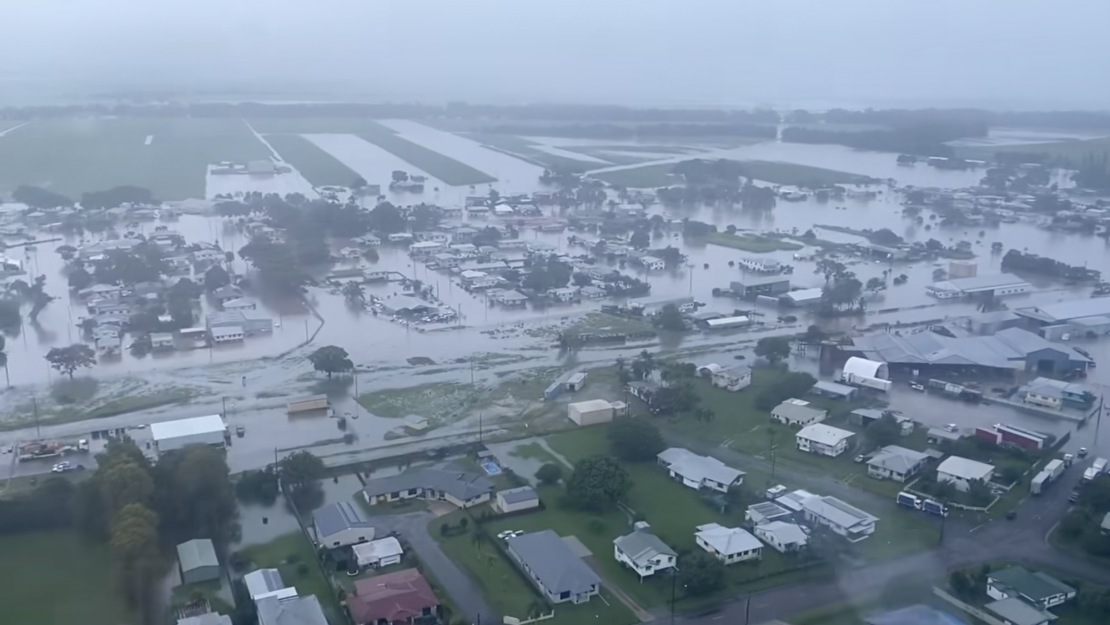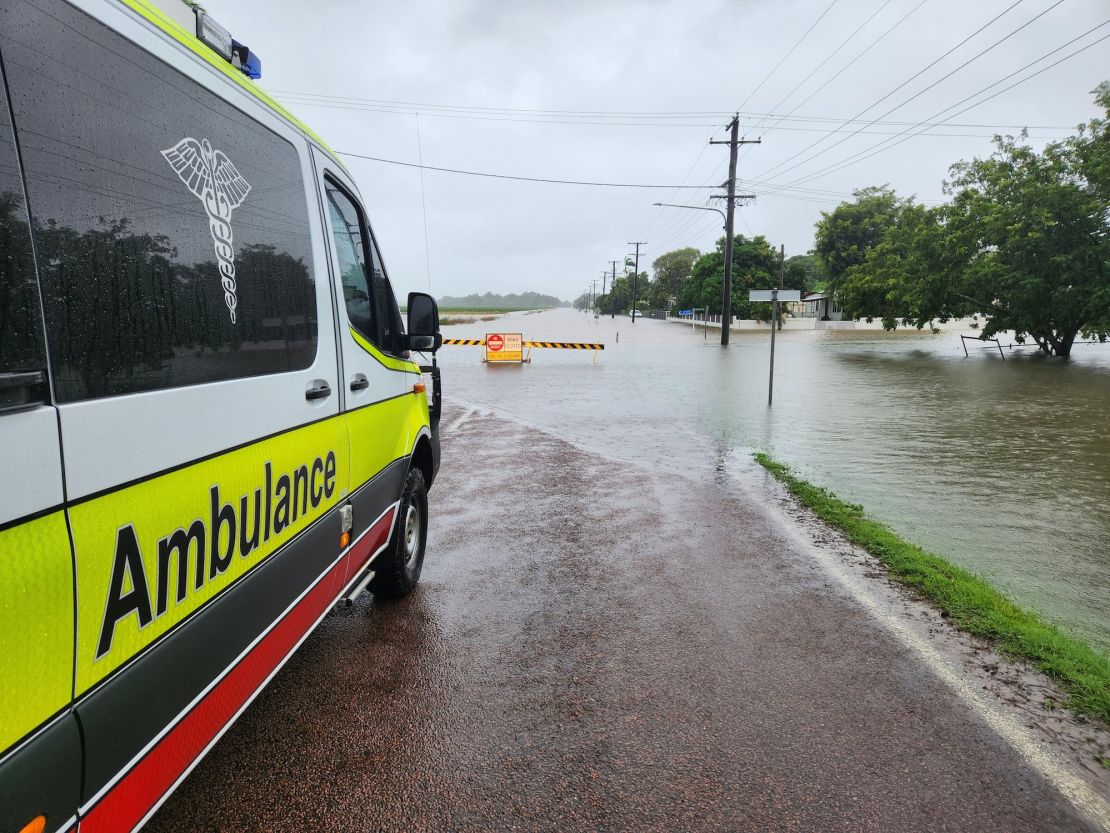Deadly floodwaters triggered by record rainfall in Australia’s northeast rose for a third day Monday as authorities warned flood-stricken communities to brace themselves for further destruction.

One person drowned in the flooding on Sunday and thousands of residents in low-lying coastal suburbs and towns are under immediate evacuation orders after nearly a summer’s worth of rain fell on large parts of North Queensland in just a few days.
Impacted areas are dotted along the 735-kilometer (456 mile) stretch of the Queensland coast from Cairns – a gateway to the Great Barrier Reef – to Mackay, with the city of Townsville, Ingham town, and Cardwell among the worst hit by flash floods and overflowing rivers.
“To see the level of devastation in that community is very difficult,” Queensland Premier David Crisafulli said of Ingham on Monday, adding that homes, businesses and the agricultural sector have been badly damaged.
“That is a very strong and resilient community, but this is a flood the likes of which is only seen a handful of times,” he said.
The Australian Bureau of Meteorology extended a severe weather warning on Monday for large parts of the coast, saying “severe thunderstorms with heavy to intense rainfall are possible today.” Some areas have seen up to a meter of rainfall in the past week, and major flood warnings have been issued for areas along six rivers that are running well above flood levels.
A woman in her 60s died in Ingham after a rescue boat she was traveling in capsized after hitting a tree on Sunday morning, according to CNN affiliate Nine News. State Disaster Coordinator Shane Chelepy said the woman was one of six people on the boat, with the five others rescued.

In an update on Monday, Chelepy said there have been no further fatalities, and no people reported missing since Sunday.
Prime Minister Anthony Albanese called the death “heartbreaking news,” in a post on X. “My thoughts are with the family and the entire community at this awful time,” he said, adding that the federal government “will supply whatever resources are required to deal with this event.”
Meanwhile, Queensland’s Department of Environment, Science and Innovation has warned residents to be wary of crocodiles that could be lurking in the floodwaters, according to Nine News.
“During flooding crocodiles can turn up in places they haven’t been seen before as they move about in search of calmer waters,” the department said in a statement. “Expect crocodiles in all north and far north Queensland waterways even if there is no warning sign.”
Hundreds of calls for help
State Disaster Coordinator Chelepy said Monday that officials had received 480 calls for assistance overnight – the most reported in recent days – as well as multiple emergency alerts and reports of flash flooding.
Response teams made 11 swift water rescues of people stranded in their homes or trapped in vehicles from the rising waters, Chelepy said.
In hard-hit Townsville, six low-lying suburbs have been designated as a “black zone” and residents there have evacuated. More than 400 people have taken refuge in six evacuation centers set up to house those who had to flee their homes, authorities said.
The city of about 200,000 people was hit by devastating flooding in 2019 which was labeled by the then state premier as a “one-in-100-year event.”
Crisafulli said Sunday that this weekend’s rains could match those conditions.
“Take precautions, prepare for the worst, listen to the advice. This is a serious event,” he said.

An emergency alert was issued Sunday for the small coastal community of Bluewater, north of Townsville, with local disaster-response officials telling residents “your life may be at risk.”
“Water is rising fast and there will be dangerous and life-threatening flooding,” Townsville Local Disaster Management Group said. “If you do not leave it may become too dangerous for emergency services to rescue you.”
Relief and rescue efforts have been hampered after a bridge collapsed along the Bruce Highway, a major road that runs from the south to the far north of the state.
“The north and all of regional Queensland are at the mercy of one road,” Premier Crisafulli said. “There is an opportunity through disaster to build back better.”
Record rainfall
The flooding comes after days of torrential rain and damaging winds brought on by two low pressure tropical systems, according to the Australian Bureau of Meteorology.
Intense rain events are also getting heavier and more frequent as the world warms due to fossil fuel pollution and the consequences of the climate crisis worsens extreme weather.
Relief is in sight as the rainfall is expected to ease in the coming days but residents in several areas have been warned to expect more life-threatening rain and major floods on Monday.
“This is a significant and protracted weather event that we’re seeing with record breaking rainfall in many locations,” Matthew Collopy, senior meteorologist at the Australian Bureau of Meteorology, said Monday.
“There is already an incredible amount of water on the ground, there is more significant rain to come. So it will take days for that water to come out of those systems.”
Months’ worth of rain has fallen over the past few days, with the rural town of Rollingstone recording 1,280 millimeters (50.3 inches) over the past week. Rainfall totals of 600 mm (about 23 inches) have also been recorded in places between Innisfail and Townville, according to the bureau.
“More than six months worth of rain was recorded in the past three days in and around Townsville,” the bureau said in a post on X.
Ingham Airport, which closed on Sunday, has seen over 830 mm (32 inches) of rainfall since Friday and nearly 1,000 mm (40 inches) of rainfall in the past week. A nearby weather station shows the area has had nearly a summer’s worth of rain in that time, with the bulk of it falling in the past few days.
The hard-hit town of Cardwell has been drenched with more rain in the past 24 hours than its entire February average, with 490 mm (19.3 inches) falling in the past day.
And Paluma Dam saw 712 mm (28.03 inches) of rainfall Friday to Saturday morning and another 500 mm (20 inches) of rainfall Sunday to Monday morning, which is well over a meter of rainfall since Friday.
The intense rains have swelled rivers beyond their flood levels and authorities have begun releasing water through spillways on the Ross River Dam to relieve pressure. Though river levels in some areas have begun falling, the bureau said.
Also read: Over 200 earthquakes in 48 hours between Santorini and Amorgos
Source: CNN


